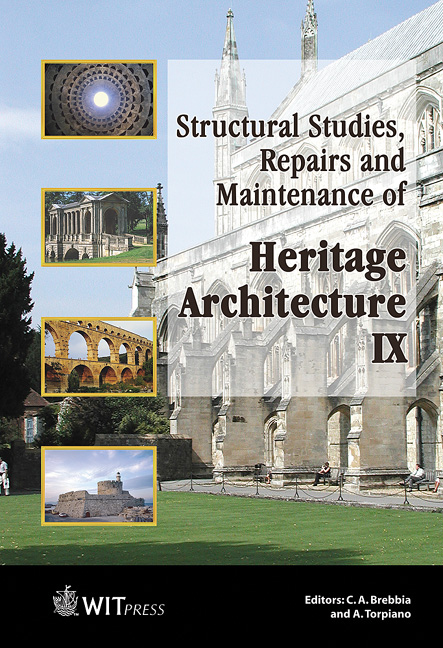Rehabilitation Of Historical Buildings \“Evaluation Of Policies And Project Outcomes In The Middle East: The Case Of Egypt”
Price
Free (open access)
Transaction
Volume
83
Pages
11
Published
2005
Size
936 kb
Paper DOI
10.2495/STR050401
Copyright
WIT Press
Author(s)
M. M. Gamal & G. M. Selim
Abstract
Arab Countries, which compose the majority of the Middle Eastern countries, faced an essential challenge since they started to loose their local and national identity under the pressure of advanced construction technology and economics. Urban patterns for many countries have been reformed in the last twenty years, gaining what can be named \“the global identity” erasing any special character of the cities. Dubai, Beirut, and Cairo are very clear examples of Middle Eastern cities which have lost their local identity. Scholars in the region have been called to maintain the presence of local identity of national culture by the conservation of cultural heritage. They want to build bridges with the past to preserve the especial character of these cities in the age of globalization. Hence, Conservation of historical buildings has become one of the targets of the national security of many developing countries. Rehabilitation projects, for instance, are usually considered as transplant surgeries, which need a high level of accuracy, well planned, completed studies of used materials and structures. They need special experience and abilities for the persons who will handle these projects. Unlike developed countries developing countries commenced many projects prior to establishing the trained and experienced professionals for these projects. The French government, for example, has special rules and standards for those people who are working on such projects. These workers should be trained, specialized, and approved by the governmental authority beside the responsibility of the government in partial funding and complete supervision [1]. Many conservation projects have started to rescue historical buildings all over the region. Some of these projects have been used today, performing their activities just as a new building, regardless of their historical value. But some questions that need to be raised are \“Does that building still have its historical and original value or not? Is that building still considered historical?”
Keywords




